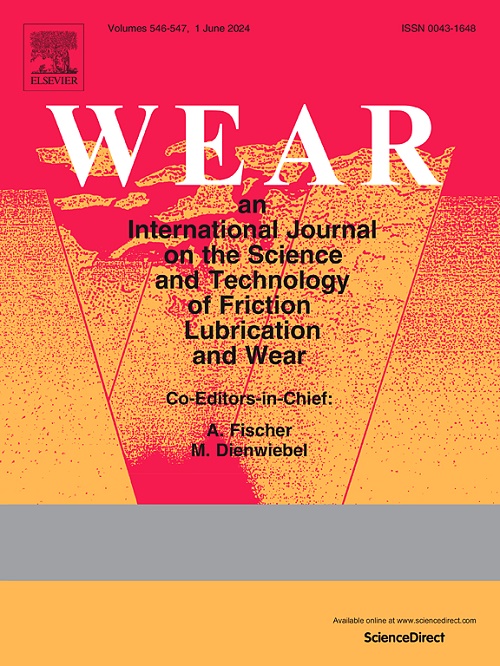Wear modelling and experimental research on diamond coated tool ultrasonic longitudinal-torsional vibration grinding and polishing of SiCp/Al composites
IF 5.3
1区 工程技术
Q1 ENGINEERING, MECHANICAL
引用次数: 0
Abstract
The substantial discrepancy in cutting properties between the Al matrix and SiC particles within the aluminum-based silicon carbide (SiCp/Al) composition results in severe tool wear during machining operations. This significantly affects the surface quality of the workpiece. Texture boron-doped micro and nano diamond-coated tools are prepared in this paper to study such problems. The tools are then used to conduct sliding friction experiments and ultrasonic longitudinal-torsional vibration, abrasion and polishing machining experiments on SiCp/Al with a volume fraction of 45 %. A tool wear model has been established based on the wear delamination theory. The sliding friction experiment has yielded an average friction coefficient of 0.22 between diamond-coated tools and SiCp/Al, which reduces the coefficient of friction by 57.7 % compared with cemented carbide tools. Furthermore, the surface quality of the wear marks is significantly improved. The tool wear under different machining parameters is analyzed by ultrasonic longitudinal-torsional vibration grinding and polishing experiments, and the validity of the wear model is verified with a maximum error value of 19.3 %. In comparison with conventional machining methodologies, ultrasonic longitudinal-torsional vibration machining has been demonstrated to enhance machining efficiency, improve the surface quality of the workpiece, prolong the service life of the tool, and reduce the cutting force by a maximum of 48.75 %. Concurrently, it has been observed to augment the cutting force of diamond-coated tools during standard operation.
SiCp/Al复合材料金刚石涂层刀具超声纵扭振动磨削抛光磨损建模与试验研究
铝基碳化硅(SiCp/Al)成分中的Al基和SiC颗粒在切削性能上的巨大差异导致了加工过程中严重的刀具磨损。这极大地影响了工件的表面质量。为了研究这一问题,本文制备了织构掺硼微纳米金刚石涂层工具。然后利用刀具对体积分数为45%的SiCp/Al进行了滑动摩擦实验和超声纵扭振动、磨损和抛光加工实验。基于磨损分层理论,建立了刀具磨损模型。滑动摩擦实验表明,SiCp/Al与金刚石涂层刀具的平均摩擦系数为0.22,比硬质合金刀具的摩擦系数降低了57.7%。此外,磨损痕迹的表面质量也得到了显著改善。通过超声纵扭振动磨削和抛光实验,分析了不同加工参数下刀具的磨损情况,验证了磨损模型的有效性,最大误差为19.3%。与传统加工方法相比,超声纵扭振动加工提高了加工效率,改善了工件的表面质量,延长了刀具的使用寿命,最大减少了48.75%的切削力。同时,在标准操作过程中,观察到它可以增加金刚石涂层刀具的切削力。
本文章由计算机程序翻译,如有差异,请以英文原文为准。
求助全文
约1分钟内获得全文
求助全文
来源期刊

Wear
工程技术-材料科学:综合
CiteScore
8.80
自引率
8.00%
发文量
280
审稿时长
47 days
期刊介绍:
Wear journal is dedicated to the advancement of basic and applied knowledge concerning the nature of wear of materials. Broadly, topics of interest range from development of fundamental understanding of the mechanisms of wear to innovative solutions to practical engineering problems. Authors of experimental studies are expected to comment on the repeatability of the data, and whenever possible, conduct multiple measurements under similar testing conditions. Further, Wear embraces the highest standards of professional ethics, and the detection of matching content, either in written or graphical form, from other publications by the current authors or by others, may result in rejection.
 求助内容:
求助内容: 应助结果提醒方式:
应助结果提醒方式:


